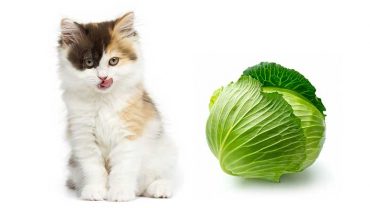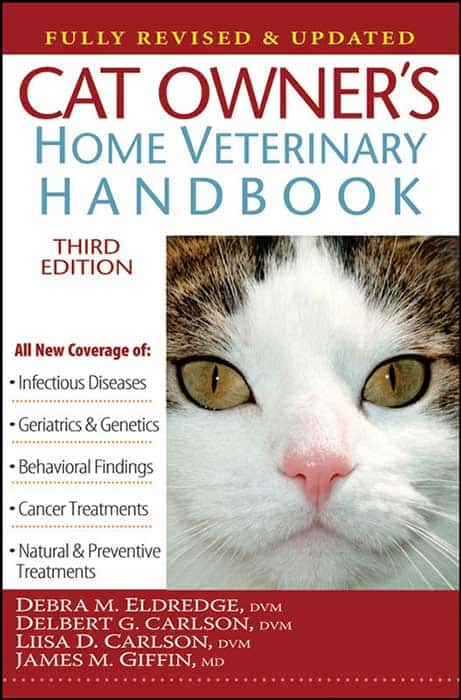Can Cats Eat Cabbage?
Yes, cats can eat cabbage as long as you watch the portions that you offer to your cat. Cabbage is one of the healthiest veggies, both for humans and felines. One of the best things about cabbage is that you can offer it to your cat raw, cooked, or both. Not only is the vegetable healthy for cats, but most cats love it too.
However, when it comes to offering plant foods to obligate carnivores like cats, there are always ground rules to follow.
A little more than the recommended quantity might wreak havoc on your cat’s gastrointestinal tract. That underscores the importance of serving cabbage to your feline only in moderation.
Besides, the methods of preparation also determine how your cat’s system responds to a diet of cabbage.
Read on to uncover more tips on how cabbage could benefit your kittie, and how to go about it.
Table of Contents
Types of Cabbage
There are over 400 varieties of cabbage cultivated throughout the world. Cabbages are mostly classified depending on their shapes, colors, maturation time, and nutrient composition.
Out of the 400 varieties of cabbage, only four are the most widespread. These include Green Cabbage, Red/purple Cabbage, Savoy Cabbage, and Napa Cabbage.
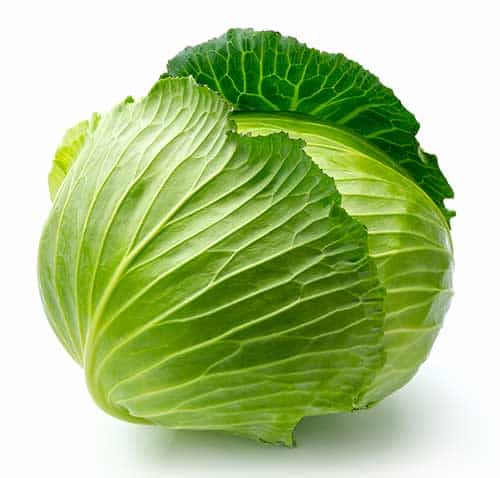
Green cabbage resembles the head of iceberg lettuce and is the most abundant type of cabbage. The outer leaves of green cabbage come in numerous color variations, ranging from dark to pale green. The insides feature white or pale green colors.
Green cabbage has a somewhat rubbery texture and a peppery flavor when raw. However, the texture softens and the peppery flavor becomes sweeter when cooked.
Due to their relative abundance compared to other cabbage variants, green cabbages are the most common ones that pet owners tend to offer to their felines. As they tend to ripen fast, green cabbage feature only a standard balance of nutrients.
Red or Purple Cabbage takes longer to mature compared to their green counterparts. Therefore, they’re relatively more tender too. That makes it easier to prepare and serve, either raw or cooked. These cabbage varieties attribute their color to a compound known as anthocyanin, which comes with a host of benefits that we’ll discuss later on.
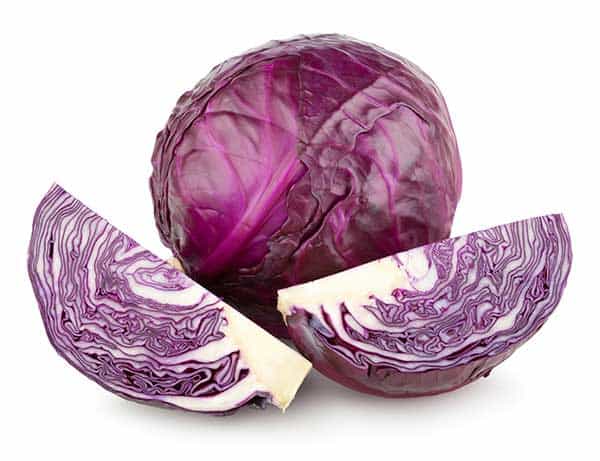
The other category of cabbage is savoy cabbage, which has deep-green, crinkly leaves. Savoy cabbages are the most tender and sweet of all the cabbage varieties. However, it’s unclear if our feline friends actually enjoy their delectable taste, considering humans and animals have different taste buds.
Lastly, we have the Napa cabbages that are characterized by yellow-green and oblong heads, with frilly leaves and crispy, thick stems. Napa cabbages are famous for their mild flavors as well as their softness and sweetness. Therefore, they are excellent either raw or cooked.
So, which of these cabbage varieties is ideal for your furry, little friend? Can cats eat purple cabbage, or are you better off serving it the green, Napa and Savoy types?
In the following section, we’ll focus on other benefits of cabbage, highlighting advantages that are unique to specific cabbage varieties. That might help you choose wisely among all the available options.
Cabbage Pros and Cons for Cats
The best way to understand cats and cabbage is to examine some of the possible health and dietary benefits of the vegetable, then check if there are any concerns to be worried about.
The following is a rundown of some of the ways your cat might benefit from an occasional treat of cabbage.
1. Packs Anti-inflammatory Properties
Chronic inflammation is a problem that affects cats in nearly the same way it affects humans. In most cases, it results from debilitating conditions, such as feline arthritis and heart disease.
Inflammation not only lowers your cat’s level of activity, but it also makes the cat vulnerable and an easy target by other pets.
Thankfully, cabbage contains a considerable quantity of antioxidants such as kaempferols and sulforaphanes that are instrumental in relieving chronic inflammation. Besides, antioxidants inhibit the action of free radicals and may help lower the risks of other chronic infections, such as cancer.
2. Promotes a Healthy Heart and Prevents Blood Pressure Spikes
As we already mentioned, purple cabbage contains powerful anthocyanins.
In fact, cabbage boasts over 30 different components of potent anthocyanins. Besides giving cabbages their colorful pigmentation, numerous studies have linked anthocyanins to reduced risks of developing heart disease.
Dietary anthocyanins are especially remarkable at lowering the risks of coronary artery disease and blood pressure, two of the primary triggers for heart disease. High blood pressure not only increases the risks of feline heart disease, but it’s also associated with stroke.
Though you can help counter high blood pressure by lowering the amount of salt you offer to your cat, research suggests that dietary potassium is remarkable at regulating blood pressure levels. And cabbage is abundant in dietary potassium.
Potassium lowers your kitto’s blood pressure by neutralizing the effects of sodium in the body, while also helping the cat to excrete excess sodium through urine. Besides, potassium relaxes the blood vessels, which also helps to keep blood pressure in check.
3. Improves Digestion and Regulates Cholesterol
Cabbage is high in dietary fiber that helps relieve indigestion and improve your feline’s bowel movements.
The vegetable packs gut-friendly insoluble fiber as well as soluble fiber. Insoluble fiber isn’t broken down in your cat’s intestines. Therefore, it bulks the stools, enhancing regular bowel movements.
On the other hand, soluble fiber increase the number and activity of the beneficial bacteria in the gut, such as Lactobacilli and Bifidobacteria. Also, soluble fiber, along with plant sterols that are also found in cabbage, are instrumental in the regulation of cholesterol.
Soluble fiber lowers bad LDL by binding with the cholesterol present in the gut, preventing it from getting absorbed into the cat’s bloodstream. Plant sterols have a structural similarity as cholesterol and reduce bad LDL by preventing it from getting absorbed in the digestive tract.
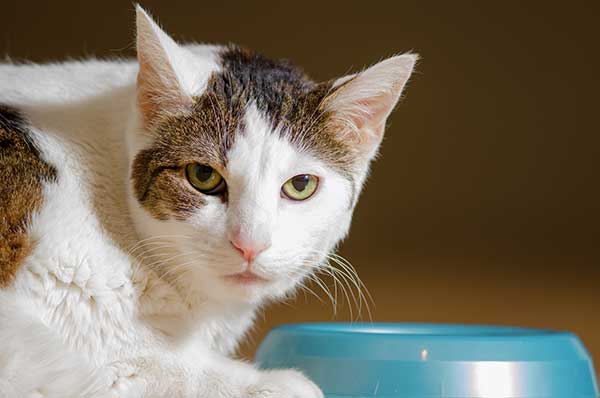
Overall, both soluble and insoluble fiber boost your feline’s immunity, improve digestion, while also helping in the production of essential nutrients, such as vitamins K2 and B12.
Besides the above minerals, cabbage contains many other essential elements that might impact the health of your feline in various ways.
For instance, it packs vitamin K1, which escalates the blood-clotting process. Vitamin B6 and folate boosts your kitto’s energy levels while enhancing the proper functioning of its nervous system. Vitamin C enhances skin flexibility and improves the functions of muscles, bones, and blood vessels.
Other minerals your cat may benefit from a snack of cabbage include magnesium and manganese.
So, what’s Not So Great about Cabbage for Cats?
We’ve already highlighted many health and nutritional benefits of cabbage. However, it may interest you to know that most researches on those benefits were focused around humans. When it comes to cats, the benefits may not be as profound, considering the slight difference in human and animal physiology.
Secondly, cats have different dietary needs from humans. While plant matter should regularly feature in our diets, the same cannot be said about felines.
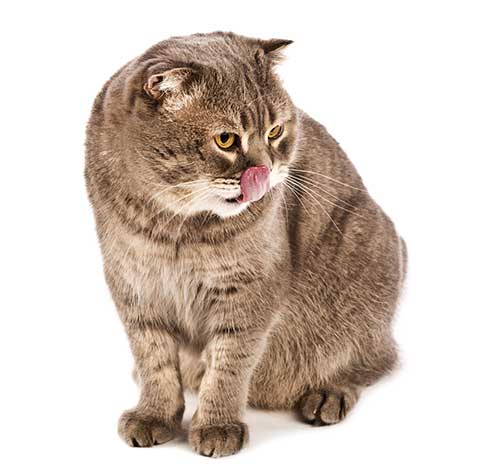
Being obligate carnivores, cats can live exclusively on a diet of animal protein. In fact, their bodies are designed to manufacture some of the essential nutrients that are lacking in animal protein.
So, while cabbage packs a host of dietary benefits, your cat will unlikely benefit from them. And since their bodies cannot process huge amounts of carbohydrates and fiber, offering cabbage to your cat in excess might do it more harm than good. The cat may develop gastrointestinal complications, such as constipation, diarrhea, gassiness, abdominal pains, and loss of appetite.
On a more severe scale, cabbage contains a substance known as thiocyanate, which is known to suppress thyroid function. When that happens, your cat may experience sudden weight gain, loss of energy, and generalized muscle weakness. To avoid thiocyanate poisoning, always rotate cabbage with other vegetables.
Remember, the potential dangers of serving cabbage to your cat are more real when dealing with kittens. So, you may be wondering, can kittens eat cabbage?
What’s The Best Way to Serve Cabbage to Cats?
You can offer cabbage to your cat, either raw or cooked.
The primary reason for serving raw cabbage to your cat is that it preserves most of the essential elements, such as antioxidants. Cooking often diminishes the effects of these compounds.
? However, there are certain drawbacks to feeding raw cabbage to your feline. First, the cat may have difficulties chewing the vegetable, especially if you don’t take your time to chop or grate the cabbage into smaller pieces. As a result, your little furball may choke on the vegetable or even develop constipation.
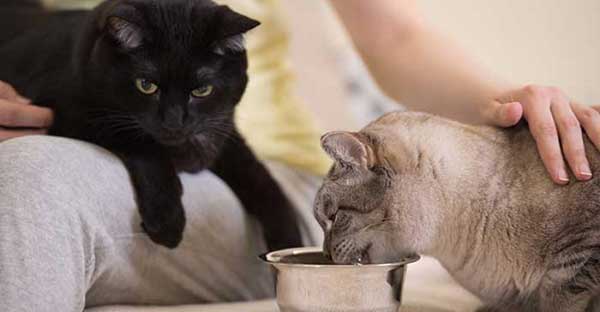
Besides, raw cabbage, much as it preserves most of the nutrients, also features aerosol residues. While most aerosols used for pest control in vegetables are generally safe, having your cat consume them whole may pose severe risks to its GI tract.
When it comes to cooking cabbage for your cat, there are plenty of options to experiment with. You could boil, steam, roast, or serve canned cabbage to your feline friend.
However, experts recommend boiling or steaming cabbage as that way, many of the nutritional elements remain intact. Either way, ensure you prepare the vegetable in plain water without adding salt, garlic, onions or other condiments. You can serve it to your cat as a standalone treat or mix it into its regular food.
If your cat isn’t fun of drinking water and regularly becomes dehydrated, you may consider serving it canned cabbage. But remember the general rule – no salt, seasonings, or condiments.
So, Can Cats Eat Cabbage?
Yes, but it all comes down to the portions. As with all plant foods, feed cabbage to your feline friend only in small amounts. It’s prudent to start small and see if the cat likes the vegetable. Even if it does, only offer cabbage to your cat as an occasional treat.

